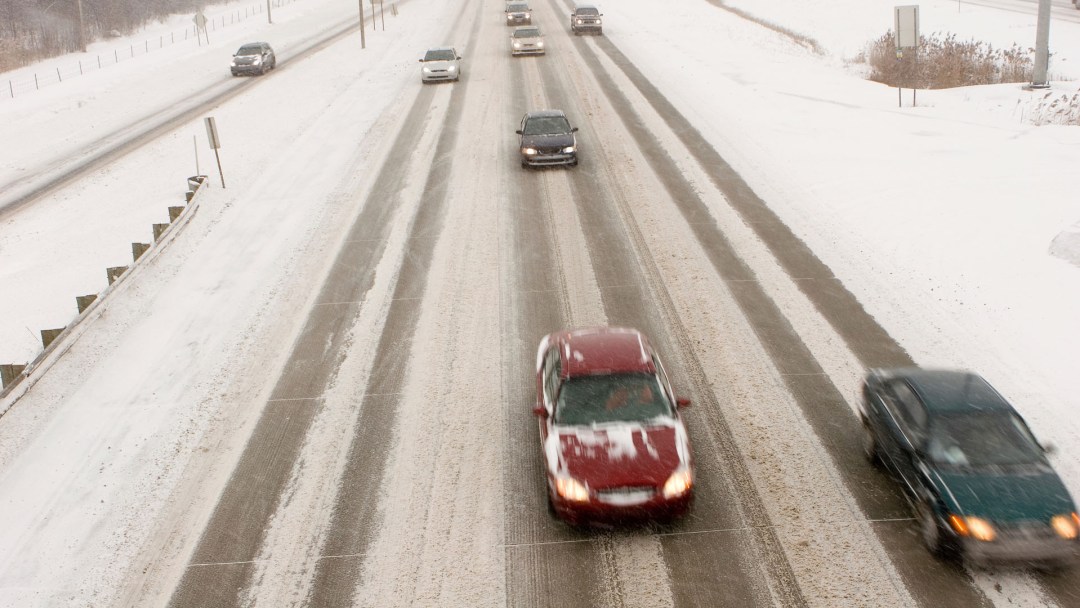While cruising down the highway, you may have been surprised to find the vehicle ahead of you suddenly halting. You jam your foot on the brake pedal, praying for a miracle from every road safety expert out there. The worst part? Your heart’s racing faster than any motor vehicle could. Sounds familiar?
This is where understanding and applying the 4-Second Rule and Safe Drive Spacing comes into play.
In this deep dive, we’ll not only unravel what this rule really means but also guide you through mastering it under varying conditions – speed limits, tailgating situations or even during adverse weather. By reading on, you’re arming yourself with essential defensive driving techniques which might just be your lifesaver next time!
You ready to shift gears towards safer driving habits?
Table Of Contents:
- Understanding the Importance of Safe Driving Distance
- The Role of Speed Limit in Determining Safe Distance
- Tailgating Dangers and Best Practices to Avoid Them
- Mastering the Four-Second Rule for Safe Drive Spacing
- Mastering the Four-Second Rule for Safe Drive Spacing
- How to Apply the Four-Second Rule in Real-Time Driving
- Adapting the Four-Second Rule for Different Driving Conditions
- Navigating Adverse Weather Conditions While Driving
- Adjusting Safe Driving Distance in Poor Visibility
- Foggy Weather: When Seeing Is Believing
- Rainy Days: More Than Just a Wet Drive
- Snowy Conditions: Slippery When Frozen
- The Impact of Vehicle and Tyre Conditions on Braking Distances
- Understanding Tire Tread Depth
- Influence Of Tire Width And Pressure On Stopping Distance
- FAQs in Relation to 4-Second Rule and Safe Drive Spacing
- What is the 4 second rule to help you maintain a safe following distance?
- What is the 4 second gap in traffic?
- How many seconds should you leave between you and another driver?
- What is the 4 second safety rule?
- Conclusion
Understanding the Importance of Safe Driving Distance
Maintaining a safe driving distance, also known as following distance or drive spacing, is critical to prevent rear-end collisions and ensure road safety. Most motorists fail to leave adequate space between their automobile and the car in front of them.
NHTSA reports that tailgating is a major factor in causing car crashes. By ensuring you’re not a ‘tailgater’, you become part of the solution for safer roads.
The Role of Speed Limit in Determining Safe Distance
Increasing speed necessitates more stopping distances due to momentum gained by your vehicle – this means that at higher speeds, maintaining an increased safe driver gap becomes vital. Think about it like this: when playing catch with a ball thrown fast versus slow – which one gives you less time to react?
That’s right. The faster ball leaves lesser reaction time just like a high-speed limit decreases reaction distance on the road while driving. Hence it’s clear that as speed increases so should our following distance. This isn’t just defensive driving; it’s smart driving.
Tailgating Dangers and Best Practices to Avoid Them
No matter how good your braking ability or what kind of advanced brakeforce distribution system your motor vehicle boasts off- tailgating can make all these factors irrelevant if sudden braking occurs ahead.
A surprising fact from Allen & Allen states that many auto accident cases occur because drivers fail the 4-second rule for safe following distance—a technique used extensively by truck drivers around Virginia Commercial Driver’s Manual standards—to maintain appropriate separation between vehicles.
Following a larger vehicle too closely is especially dangerous. Their heavy load can mean increased braking distances, which puts the tailgating driver at risk of an accident if they don’t maintain enough space to stop safely. Travelers.com offers some excellent safety tips on how best to handle such situations, including using road markings and other driving techniques.
Mastering the Four-Second Rule for Safe Drive Spacing
The Four-Second Rule provides a simple way for drivers to ensure they maintain an appropriate amount of distance between their vehicle and others, thus reducing the risk of accidents. This handy tip helps drivers maintain enough space between their vehicle and others, minimizing risks and enhancing safety.
Key Takeaway: Understanding and practicing safe driving distances, or drive spacing, is crucial for preventing accidents. Remember: higher speeds mean more space needed to stop safely. Avoid tailgating – it’s not just about your braking ability but also reaction time. The 4-second rule is a simple guide to help maintain appropriate distance between vehicles.
Mastering the Four-Second Rule for Safe Drive Spacing
When it comes to driving, one of the most crucial skills is understanding and implementing safe drive spacing. This helps prevent rear-end collisions, which can result from inadequate space between vehicles. Here’s where mastering the four-second rule, a fundamental aspect of defensive driving techniques, comes into play.
How to Apply the Four-Second Rule in Real-Time Driving
The four-second rule provides a practical method for maintaining an appropriate following distance under normal road conditions. So how does this work? Let’s break it down:
- Pick a stationary object on or near the road ahead – perhaps something like a signpost or tree (set object).
- As soon as the car ahead passes that object (car passes), start counting: “one thousand one… one thousand two…”.
- If you pass your chosen marker before reaching ‘one thousand four’, then you’re too close and need to ease off on your speed until there’s enough room.
This easy-to-use technique lets drivers ensure they maintain safe following distances regardless of their vehicle’s speed. The four seconds allow ample time for reaction distance should anything unexpected happen up front—like sudden braking by another motor vehicle.
Note: It’s important not just when other drivers pass these set objects but also when larger vehicles such as trucks do so since truck drivers often have different stopping distances due to their size and weight.
Bear in mind that although we usually refer to it as 4 second rule, sometimes people use terms like “three-second rule” or “3 second rule”. It’s all about adjusting to the road conditions and your driving ability. The 4-second rule is more of a suggestion than an inflexible regulation.
Let’s bring some stats into play here. Studies have shown that maintaining at least four seconds of distance between vehicles can dramatically reduce the chances of accidents on our roads. Travelers Insurance, for instance, strongly endorses this technique as an essential safety tip.
Adapting the Four-Second Rule for Different Driving Conditions
It seems the golden rule isn’t as straightforward as we thought.
Key Takeaway: a valuable method to maintain safe driving distances. Yet, the effectiveness of this rule depends on your judgment and adaptation to different situations on the road. After all, safety is about more than just rules—it’s about being aware and ready for whatever comes your way.
Navigating Adverse Weather Conditions While Driving
Operating a vehicle in rough atmospheric conditions can be an ordeal for one’s driving skills. Rain, snow, fog, or even heavy winds can significantly alter road conditions and visibility. But with some thoughtful defensive driving techniques and adjustments to the rule for safe following distance, you can navigate these situations more safely.
Adjusting Safe Driving Distance in Poor Visibility
The reaction time required when visibility is poor increases as identifying hazards becomes more challenging. You need an extra buffer between your car and the vehicle ahead to compensate for this delay. The standard 4-second rule might not be enough during bad weather – you may want to extend it to a 6-second following distance.
In addition to increasing your following distance, reducing speed is another key adjustment that needs consideration during inclement weather conditions. A slower pace gives drivers additional time for braking if needed due to slippery roads or sudden obstructions.
Your brakeforce distribution also plays a critical role here because stopping distances vary based on road surface condition along with tyre condition and air resistance at play while slowing down.
Foggy Weather: When Seeing Is Believing
Fog poses unique challenges by obscuring warning signs or light poles until they are very close which puts pressure on driver’s response times greatly. Here’s where understanding how fog affects vision comes into play—your headlights will only make things worse if used incorrectly. High beam lights reflect off the water droplets in fog back towards you causing glare making it harder for other drivers to see well. So stick with low beams or use dedicated fog lights if available.
Rainy Days: More Than Just a Wet Drive
Rain not only affects visibility but also the road surface, making it slippery. Your tires can lose grip with the water-filled grooves on asphalt roads causing your vehicle to skid or ‘hydroplane.’ To counteract this, reduce speed and ensure tire tread depth is adequate.
Snowy Conditions: Slippery When Frozen
Driving in snow is a whole new ball game – both traction and visibility take a hit. If you end up behind the wheel during a heavy snowfall or on icy roads, it’s crucial to slow down.
Key Takeaway: Mastering adverse weather driving involves smart defensive techniques and adapting safe following distances. When visibility dips, consider expanding the 4-second rule to a 6-seconds gap. Slowing down can give you more time for braking on slippery roads or around sudden obstructions. If it’s foggy out there, stick with your low beams; using high beams can cause glare as light bounces off water droplets right back at you.
The Impact of Vehicle and Tire Conditions on Braking Distances
It is often misconstrued that the stopping distance of a car depends only on its speed, when in fact it also relies heavily on both the condition of your vehicle and tires. In reality, it also depends heavily on both the condition of your vehicle and tires.
Your motor vehicle may be top-of-the-line with all modern brakeforce distribution systems in place, but if your tire tread depth isn’t sufficient or their overall condition is poor, braking distances can drastically increase. It’s similar to running full speed in shoes without grip – no matter how fit you are, stopping suddenly becomes more difficult.
Understanding Tire Tread Depth
Tire tread depth plays a crucial role in road safety. The deeper the grooves in your tire treads are, the better they disperse water under them while driving on wet surfaces. This helps maintain control over the car by preventing hydroplaning – when a layer of water builds between tires and road surface causing loss of traction which leads to skidding or sliding.
If we look at Travelers dot com guide, it gives clear instructions about checking tire conditions before heading out during winters because even 1mm reduction from recommended tread depth could lead to an extra meter added to our braking distance.
Influence Of Tire Width And Pressure On Stopping Distance
The width and pressure inside your tires directly impact their contact patch – that part which physically touches the ground. A wider contact patch (wider tires) provides better grip thus reducing braking distances as compared to narrow ones; whereas under-inflated or over-inflated tires tend to decrease this contact patch leading to increased stopping distances.
It’s important to remember that maintaining correct tire pressure is not only beneficial for fuel efficiency and longevity of tyres, but it’s also a critical factor in ensuring shorter braking distance. Remember to check your tire pressure regularly.
Key Takeaway: But it’s not just the tires’ width that matters. Pressure plays a crucial role too. It directly impacts the contact patch – the area where your tire meets the road surface. A properly inflated tire maximizes this patch, ensuring better grip and safer rides. So always make sure to keep an eye on your tire pressure and tread depth for optimum stopping distances.
FAQs in Relation to 4-Second Rule and Safe Drive Spacing
What is the 4 second rule to help you maintain a safe following distance?
The 4-second rule means keeping four seconds worth of space between your car and the vehicle in front, ensuring enough reaction time for sudden stops.
What is the 4 second gap in traffic?
A 4-second gap in traffic refers to maintaining a buffer zone around your vehicle. It gives you room to react if other drivers make unexpected moves.
How many seconds should you leave between you and another driver?
Ideally, keep at least four seconds of space. But remember, adverse weather or road conditions might require more safety distance.
What is the 4 second safety rule?
The 4-second safety rule helps gauge proper drive spacing. If it takes less than four seconds to reach an object passed by the leading car, back off some.
Conclusion
Mastering the 4-Second Rule and Safe Drive Spacing isn’t just about counting seconds. It’s about being a defensive driver, always alert to your surroundings.
Remember that speed limits dictate safe distances between cars – faster speeds mean more space needed. But it doesn’t stop there: tailgating can lead to serious accidents, so let those eager drivers pass you by safely.
We’ve tackled adverse weather conditions too; they demand even larger gaps for safety due to poor visibility or slippery roads. And never underestimate the impact of vehicle length and tire condition on braking distance!
All these factors contribute towards making our journeys safer and less stressful. So get behind the wheel with confidence knowing you’re equipped with key road safety skills now!
If you would like hands-on driver skills training, we currently have available openings for our Winter Skills Clinic.
More From Our Blog
Driving Laws and Teen Safety
Teens getting behind the wheel can be a nerve-wracking time for parents due to the potential dangers for young, inexperienced drivers. After all, information from the CDC shows that the risk of motor vehicle crashes is among the highest for teen drivers. In fact,...
What a Vehicle Crash Will Cost Your Company
According to the National Safety Council (NSC), motor vehicle collisions are the leading cause of death and injury in the workplace. A report from Motus, a vehicle management and reimbursement platform, found that the number of auto accidents and injuries remain at...
Crash Magnets – The Conditions and Locations Where Crashes Often Occur
Even if you are a very safe driver, there are some common conditions and locations on the road that can increase your chances of being in a crash. Knowing how to handle your car in these conditions or how to avoid these dangers altogether, can help you stay in control...



